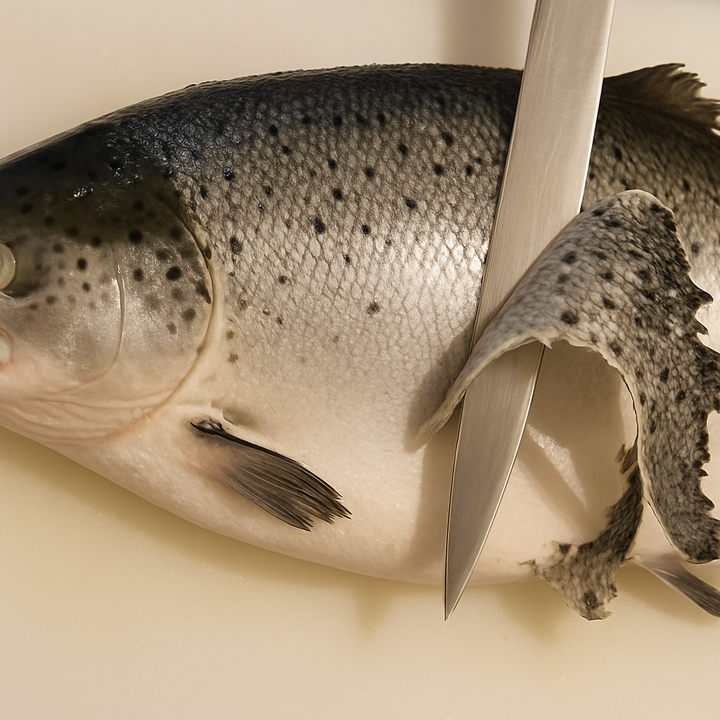Exploring the Bitter-to-Sweet Spectrum of Durian Flavors
Durian offers an extraordinary flavor spectrum from bitter to sweet. With hundreds of cultivars and over 200 volatile compounds creating complex profiles, this polarizing fruit rewards adventurous eaters with depth beyond its infamous aroma.

The durian presents one of the most complex and polarizing flavor profiles in the botanical world. This spiky, formidable fruit elicits extreme reactions—from devoted adoration to vehement disgust—largely due to its notorious aroma and remarkable taste diversity.
While many fruits offer subtle variations in sweetness or acidity, durian stands apart with its extraordinary spectrum of flavors ranging from intensely bitter to luxuriously sweet, often within the same fruit.
This comprehensive exploration delves into the intricate world of durian flavors, examining the biochemical foundations, cultivar differences, and cultural significance of this remarkable fruit.
The Biochemical Foundations of Durian's Flavor Complexity

Durian's unique flavor profile stems from an extraordinarily complex biochemical composition.
Research published in the Journal of Agricultural and Food Chemistry has identified over 200 volatile compounds in durian pulp, far exceeding the number found in most other fruits.
This chemical complexity creates the foundation for durian's vast flavor spectrum.
Key Compounds Contributing to Durian Flavors
The interplay between several classes of compounds creates durian's distinctive taste experience:
- Sulfur compounds: Perhaps most infamous are durian's sulfur-containing volatiles, including hydrogen sulfide, ethanethiol, and various thioesters. These contribute to the fruit's characteristic pungent aroma but also add savory, umami-like qualities to its flavor profile. The concentration of these compounds varies dramatically between cultivars, explaining why some varieties smell significantly stronger than others.
- Esters: Fruity, sweet notes come from various esters, including ethyl propanoate and propyl acetate. These compounds provide the sweet, tropical undertones that balance the more aggressive sulfurous elements.
- Thiols and disulfides: These compounds contribute to both aroma and flavor, adding complex notes that some describe as resembling roasted onions, caramelized sugar, or even cheese.
- Alcohols: Various alcohols, including propanol and 2-methyl-1-butanol, add subtle fruity dimensions to the overall flavor profile.
- Aldehydes and ketones: These contribute to the sweet, almond-like, and sometimes vanilla undertones in certain durian varieties.
What makes durian particularly fascinating is that the ratios of these compounds differ not only between varieties but also within the same fruit at different stages of ripeness. This creates a dynamic flavor experience that evolves as the fruit ripens.
The Cultivar Spectrum: From Bitter to Sweet
While many Westerners encounter durian as if it were a single fruit, Southeast Asians recognize hundreds of distinct varieties, each with its own flavor signature along the bitter-to-sweet spectrum.
Here are some notable cultivars that demonstrate this remarkable diversity:
Bitter-Forward Varieties
- D24 (Sultan): With a pronounced bitterness that gradually gives way to sweetness, D24 is often recommended for durian connoisseurs rather than novices. Its complex bitter notes are balanced by hints of caramel and a custard-like texture, making it a sophisticated choice with a distinctive alcoholic finish.
- D15 (Chanee): Popular in Thailand, this variety presents powerful bitter notes alongside a strong aroma. The bitterness is complemented by an almost savory, nutty quality that many experienced durian eaters prize.
- Kanyao: Another Thai variety known for its initial bitterness that transforms on the palate, revealing layers of complexity with almond-like undertones and a slightly alcoholic finish.
Balanced Mid-Spectrum Varieties
- XO: Named for its similarity to cognac's complexity, XO durians have a fascinating bitter-sweet-alcoholic progression. The initial taste is often bitter, which transforms into a sweet, creamy middle, before finishing with a distinct fermented, alcoholic note reminiscent of wine or whiskey.
- D13: Offering an exceptional balance of bitter and sweet notes, this Malaysian variety is celebrated for its complexity. The initial bitterness quickly evolves into a rich sweetness with subtle coffee undertones.
- Red Prawn (Udang Merah): This variety presents a delicate balance of slight bitterness with prominent sweet notes, offering a creamy texture and a flavor profile often compared to crème brûlée with bitter caramel elements.
Sweet-Dominant Varieties
- Musang King (Mao Shan Wang): Currently among the most prized durians globally, Musang King offers a deep sweetness with hints of butterscotch and subtle bitter notes that enhance rather than dominate the overall experience. Its custardy texture and complex sweetness make it highly sought after.
- Black Thorn (Ochee): With an intensely sweet, almost caramel-like flavor and minimal bitterness, Black Thorn has gained significant popularity in recent years. Its bright orange-yellow flesh and creamy texture contribute to its premium status.
- Golden Phoenix (Jin Feng): Featuring a delicate sweetness with floral hints and almost no bitterness, this variety offers a milder entry point for durian newcomers while still providing complexity for enthusiasts.
- D101: Distinctly sweet with very little bitterness, this variety often presents notes of vanilla and caramel, making it approachable for first-time durian consumers.
Ripeness and Its Impact on the Flavor Spectrum
The ripening process dramatically affects durian's position on the bitter-to-sweet spectrum. A single durian fruit undergoes remarkable flavor transformation as it ripens:
Under-Ripe Durian
At this stage, the fruit typically displays:
- More pronounced bitterness
- Starchier texture
- Muted aromatics
- Less complex flavor profile
- Often higher astringency
Optimally Ripe Durian
When perfectly ripe, durian achieves its full flavor potential:
- Balanced bitter and sweet notes
- Creamy, custard-like texture
- Full expression of aromatic compounds
- Maximum complexity across the flavor spectrum
- Rich mouthfeel with developed umami qualities
Over-Ripe Durian
As the fruit begins to ferment:
- Increased alcoholic notes
- Enhanced sweetness as starches convert to sugars
- More pronounced sulfurous compounds
- Sometimes medicinal undertones
- Softer, sometimes runny texture
Durian experts often develop preferences along this ripeness spectrum, with some preferring the more bitter notes of slightly under-ripe fruit, while others seek the complex fermented qualities of specimens on the edge of over-ripeness.
Environmental Factors Influencing Flavor Development
The bitter-to-sweet spectrum isn't determined solely by genetics. Environmental factors play a crucial role in developing durian's flavor profile:
- Terroir: Like wine grapes, durians are significantly influenced by the soil in which they grow. Volcanic soils tend to produce fruits with more mineral notes, while limestone-rich areas often yield sweeter durians.
- Rainfall patterns: Precipitation timing affects sugar concentration and the development of aromatic compounds. Too much rainfall can dilute flavors, while optimal rain patterns enhance sweetness.
- Sunlight exposure: Trees receiving optimal sunlight tend to produce fruits with more balanced sugar development and aromatic complexity.
- Temperature fluctuations: The day-night temperature differential impacts the formation of volatile compounds responsible for both aroma and flavor.
- Age of the tree: Mature durian trees (15+ years) generally produce fruits with more complex flavor profiles than younger trees, which may yield more one-dimensional fruits.
These factors help explain why the same durian variety can taste noticeably different depending on its origin, even within relatively small geographical areas.
Cultural Perspectives on the Bitter-Sweet Spectrum
Preference along the bitter-to-sweet spectrum often aligns with cultural traditions and regional differences:
Thailand
Thai durian consumers often appreciate varieties with significant bitter notes balanced by sweetness. Thai cultural understanding of flavor balance embraces bitterness as an essential component of a sophisticated taste experience, similar to their approach to complex curries that balance multiple flavor dimensions.
Malaysia
Malaysian durian enthusiasts frequently seek varieties with rich, complex sweetness complemented by subtle bitter notes. The high grade durian Malaysian varieties like Musang King exemplify this preference for sweetness with complexity rather than dominant bitterness.
Indonesia
Indonesian durian traditions often favor varieties that lean toward the sweeter end of the spectrum, particularly in Java. However, regional variations exist, with Sumatran preferences sometimes including more bitter varieties.
Philippines
Filipino durian culture generally favors sweeter varieties with minimal bitterness, reflecting broader culinary preferences that often emphasize sweet and sour flavor combinations over bitter notes.
China and Hong Kong
As relatively newer markets for fresh durian, consumers in China and Hong Kong have shown strong preference for sweeter varieties with minimal bitterness, though this is gradually changing as durian connoisseurship develops.
Pairing Principles: Complementing the Bitter-Sweet Spectrum
Understanding where a particular durian falls on the bitter-to-sweet spectrum helps inform optimal pairings:
Complementary Pairings for Bitter-Forward Durians
- Sticky rice with coconut cream (the sweetness balances bitterness)
- Strong black tea (tannins complement bitter notes)
- Dark chocolate (bitter compounds create harmony)
Enhancing Mid-Spectrum Durians
- Mangosteen (traditionally paired with durian for balancing "heating" and "cooling" properties)
- Glutinous rice desserts (neutral backdrop for complex flavors)
- Coffee (parallel complexity enhances the experience)
Contrasting Pairings for Sweet-Dominant Durians
- Salt (amplifies sweetness while adding dimension)
- Ginger tea (provides contrast and aids digestion)
- Coconut water (cleanses the palate between bites)
Conclusion: Embracing the Spectrum
The bitter-to-sweet spectrum of durian flavors represents one of the most fascinating continuums in the culinary world.
Far from being simply "the stinky fruit," durian offers a complex sensory journey that rewards the adventurous with unparalleled depth and diversity of flavor experiences.
Whether one prefers the sophisticated bitterness of varieties like D24, the balanced complexity of XO, or the luxurious sweetness of Musang King, appreciating durian fully means understanding its remarkable range.
In a world where food experiences increasingly trend toward standardization, durian stands as a defiant monument to nature's capacity for extraordinary sensory complexity—a fruit whose flavors cannot be simplified, only experienced.


